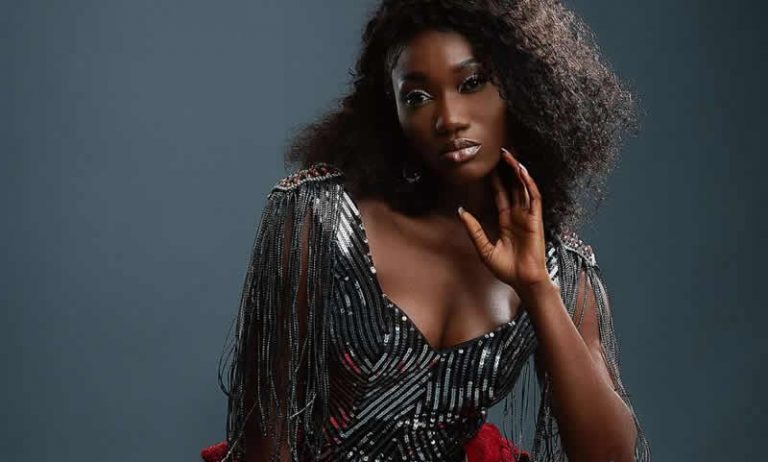African Waist Beads, Meaning, Significance, And Uses
- Home
- African Waist Beads, Meaning, Significance, And Uses

African Waist Beads, Meaning, Significance, And Uses
We would make bold to say that African waist beads were more commonplace a couple of generations earlier, certainly a lot more so than they are right now.
There was, in fact, a rather innate fascination with waist beads that existed, especially for some younger women who longed to reach the age where they could adorn some. Hidden from view underneath the modest female clothes that were favored in those times, the beads peeked out at random intervals, surprising and enticing an onlooker.
Although some people remained unaware of their significance, the allure of a beaded woman was practically undeniable.
There are many varied reasons we have come across as to why African waist beads were/are worn. Common folklore attributes it to the definition of a woman’s waist; in essence, that it helps them to maintain their figures.
Traditional Ghanaian culture though had a more practical usage, where the many strings of beads around the bikini line were employed as an anchor to strap the menstrual cloth.
Some other varied uses or significance of the waist beads include;
As a symbol of femininity and sensuality, only the partner a woman chooses would have the honor of seeing them fully.
As a sign that a woman had reached marriageable age and could now have suitors
Strung with bells, to show that a woman was still pure as at the time of marriage.
Worn on babies during naming ceremonies, some say; to accentuate their waistlines and hips as they grow.
As a weight measure; when gaining weight, the belt of the beads climb up and when you lose weight, it falls elegantly on the hips.
Upon addition of precious stones, waist beads take on healing or rejuvenation qualities; depending on ailment or what needs to be enhanced (i.e. love, physic powers, balancing), various semi-precious stones can be included in the design of your waist beads.
These days, only a few people maintain the culture of adorning these beads on a daily basis, but a vast majority are likely to put them on during special occasions. Most of the significance of the tradition is also now mostly redundant.
The women who adorn waist beads in this day and age, use it more for ornamental and beautification reasons, or simply to check their weights, so it may be wise not to read too much into a woman’s decision to wear them.

All we know is that waist beads when worn properly are beautiful things and since they have been around for quite a while, a lot of people evidently agree.
Origin of the waist bead
While there’s so much history behind waist beads, it’s generally agreed that the existence of waist beads dates back to antiquity, as far back as the 15th century.
In fact, many scholars are of the opinion that the history of beads began in ancient Egypt (North Africa) where they were donned by beautiful women as a status symbol. They were simply called ‘girdles’ at the time.
In West Africa, many historians believe the tradition of waist beads was popularized by the Yoruba tribes, notably in Senegal and Ghana (notably the Ewes, Ashantis, Krobos, Ga-Adangbes) where they speak of nobility, femininity, and affluence. Today, countries like Ivory Coast and Sierra Leone have also adopted the waist bead.
Waist bead colour: Meaning and Significance
Generally, colours play very important roles in our lives. While some people easily get drawn to bright colours, some certain colours, on the hand, literally get on other people’s nerves.
Though the meaning of the colour of a waist bead varies from culture to culture, tribe to tribe, its significance is considered very important and powerful in many African communities. Choosing the right colour of beads remains as important as its design, weight, length, and flexibility.
Below are the meanings of some bead waist colour:
Brown – Earth and stability
Gold – Good health, power and wealth
Green – Abundance, fertility, nature and prosperity
Red – Confidence and vitality
Turquoise – Communication and self-awareness
White – Light, truth and purity
Yellow – Energy, joy and happiness
Black – Power and protection
Blue – Loyalty and truth
Orange – Courage, self-confidence and vitality
Pink – Care, beauty, love and kindness
Purple – Royalty, spirituality and wisdom
The waist bead bears different names in different tribes. In Nigeria, the northern part of the country calls it Jigida while the Yorubas (the people of Southwestern Nigeria) call it Bebedi. In Igbo, it is called mgbájị́.
The waist bead is also identified as Giri-Giri, Yomba, Jel-Jelli, Bin Bin, Ileke Idi and Djalay Djalay in some other tribes.
Source: answersafrica.com
Classic Ghana
Classic Ghana brings you into a fun world of arts, entertainment, fashion, beauty, photography, culture and all things in between. Let’s explore these together!


